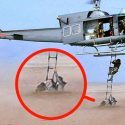The biggest planet in the Solar System has gone rogue. And now it’s heading straight toward Earth. You have 30 days till this gas giant wipes us all out. What speeds would Jupiter be traveling at?
What kind of havoc would it wreak along the way? And is there any way we could survive getting eaten by a planetary Pacman?
In our night sky, Jupiter appears a lot like a bright star. From our Earthly point of view, only Venus and the Moon are brighter. But something strange is going on 588 million km (365 million mi) away. Jupiter has ramped up its speed to 225 km/s (140 mi/s). That’s 15 times faster than its usual orbital velocity.
So now this gas giant, 11 times larger and 317 times heavier than Earth, is on the loose. And it’s going to speed right at us until it filled up the whole night sky. But don’t worry. You could already be dead long before those 30 days are up. As it moved toward Earth, Jupiter would first pass through the asteroid belt.
This region between Jupiter and Mars consists of hundreds of thousands of rocky bodies, ranging from tiny dust particles to asteroids almost 1,000 km (620 mi) in width. But none of these would do anything to slow down the gas giant. The average distance between these asteroids is about equal to seven Jupiters in a row.
So there’s a chance the planet could pass through completely unscathed. And in our night sky, jupiter would now look double its usual size. Which doesn’t seem like a whole lot to make everyone panic. But that doesn’t mean it wouldn’t cause a little bit of chaos on its trip. You see, Jupiter is vital to our Solar System and to life on Earth.
It acts as a gatekeeper to our cozy planetary neighborhood, protecting us from being bombarded with giant life-ending asteroids all the time. Why? Because Jupiter’s gravitational pull is massive, about four times stronger than Earth’s. This strong pull redirects asteroids that could be on a collision course with us. And this is good news for you.
Because even one asteroid as small as 5 km (3 mi) across could end life on Earth as you know it. Just like what happened to the dinosaurs around 66 million years ago. But if Jupiter suddenly started heading toward the center of the Solar System, it could send many dangerous space rocks our way.
If one of them smashed into our planet, you might not live long enough to witness Jupiter swallow Earth. But for the sake of our hypothetical scenario, let’s keep you alive. For now. While sending asteroids on a collision course with Earth, Jupiter could also pick up a new moon or two. The asteroid belt is host to Ceres, the only dwarf planet in the inner Solar System.
It has about 25% of the total mass of the entire belt. Maybe this dwarf planet would join the 79 other moons that make up Jupiter’s very faint ring system. Next stop would be Mars. And now Jupiter would appear almost four times larger than usual from Earth. While the red planet could be lucky enough to avoid being obliterated by a head-on impact with Jupiter, it may not make it out untouched.
Maybe the newly added moon, Ceres, would slam into it. This wouldn’t be Mars’ first rodeo, either. About 700 million years after the formation of our Solar System, a huge asteroid even larger than Ceres collided with Mars. That collision tore away part of Martian hemisphere. And the debris from that asteroid started orbiting the red planet, eventually forming into its two moons, Phobos and Deimos. These moons still orbit mars today.
Now, at 16 million km (10 million mi) away, Jupiter would be closing in on the home stretch. From Earth, you’d see it bright and clear, as large as the Moon. From this point on, you could start to feel some of the effects of Jupiter’s powerful magnetic field. This field is the largest object in the Solar System, and it’s 18,000 times more powerful than Earth’s.
It would be so strong that it could trap charged particles and accelerate them. These particles would damage electronics in our passing spacecraft. And they could potentially penetrate Earth’s atmosphere and magnetic field. And that would be real bad news.
You were lucky to avoid one of those planet-killing asteroid collisions. But now, you and everyone else on planet Earth would start to suffer from severe radiation sickness. First, you’d be incapacitated by nausea, diarrhea and vomiting. You’d also feel anxiety, confusion and could lose consciousness. After a few torturous hours, you’d start to feel okay.
But then the final stage would kick in. You’d experience tremors and convulsions before ending up in coma. Or worse. If somehow you survived this, the ultimate end would draw nearer and nearer. Now only 2 million km (1.2 million mi) away, Jupiter’s massive storm, the Great Red Spot, would be the same size as the Moon. And the planet itself would appear eight times larger than that above us.
Earth would now be caught in a violent game of tug of war between Jupiter and the Sun. This could cause tidal heating all around our planet. Earth could become a hellhole riddled with earthquakes and volcanic eruptions that would spew sulfur dioxide gases into space. All the while, Jupiter would be making its final approach.
Now, as close as the Moon, it would occupy 40 times more space in our night sky. And as it crashes into Earth, the atmospheres of both planets would compress. This would rapidly increase the temperature, causing everything on Earth, including the air itself, to burst into flames.
And in this colossal inferno, Earth would burn up in Jupiter’s atmosphere until we fuse with the gas giant forever. I guess you could call us pretty unlucky to be the only planet swallowed up by Jupiter. I wonder what would happen if it swallowed up all the others too.
Sources
- “Which Planet Orbits Our Sun The Fastest? – National Radio Astronomy Observatory”. Jeff Mangum. 2016. public.nrao.edu.
- “How Far Is The Asteroid Belt From Earth?”. Matt Williams. 2016. universetoday.com.
- “In Depth | Mars – NASA Solar System Exploration”. 2022. solarsystem.nasa.gov.
- “Don’t Miss the Brightest Objects in the Night Sky”. Tony Flanders. 2012. skyandtelescope.org.
- “In Depth | Jupiter Moons – NASA Solar System Exploration”. 2022. solarsystem.nasa.gov.



























